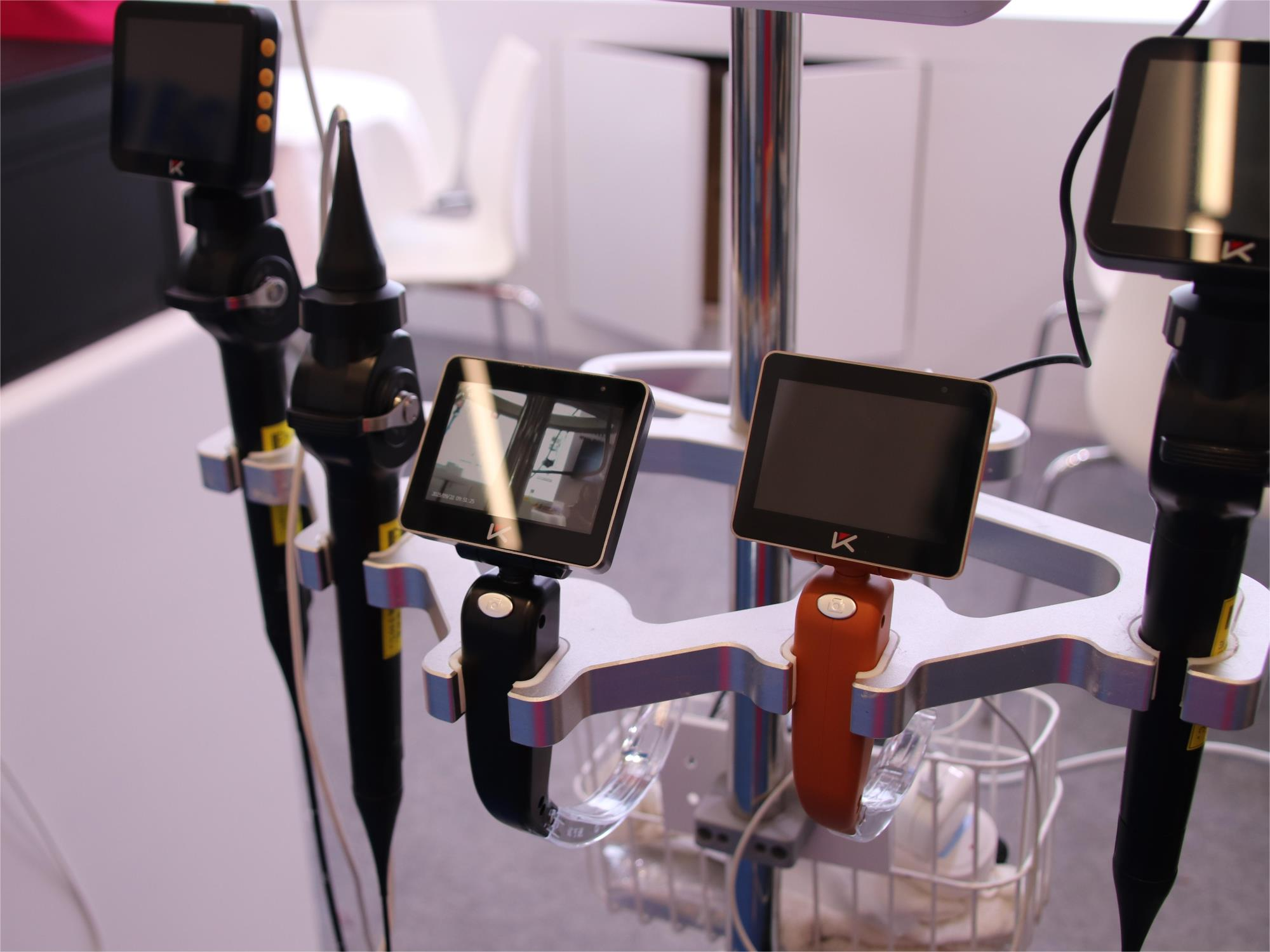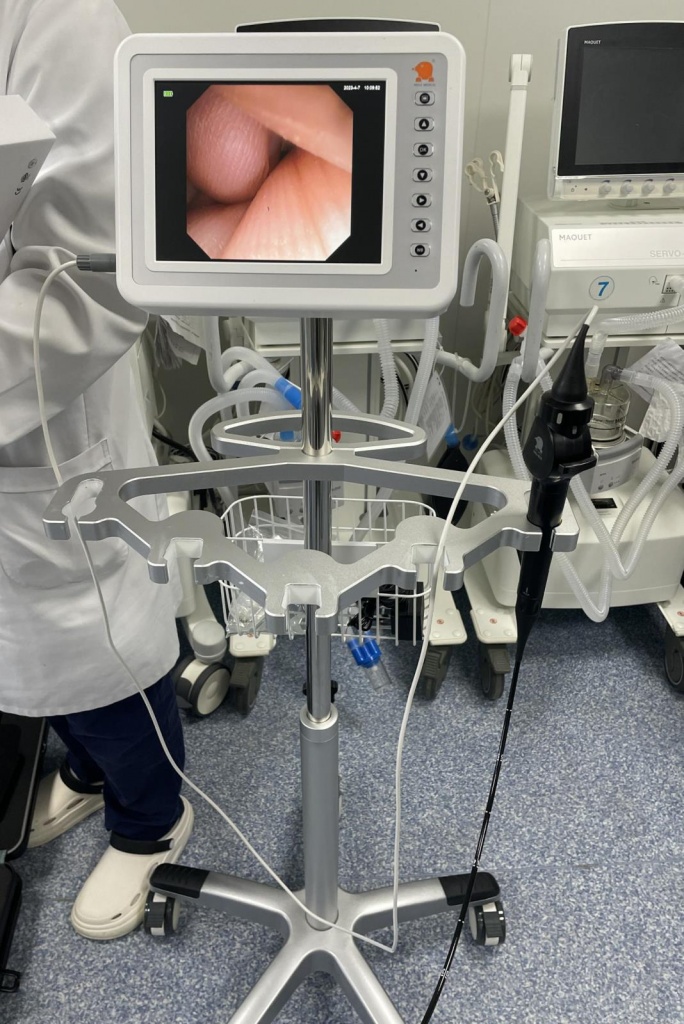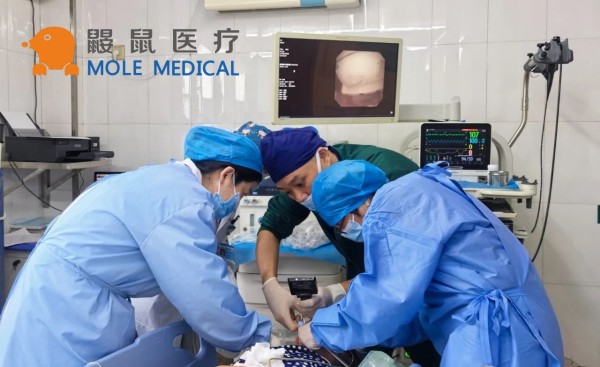Endotracheal Intubation Camera Guide & Tips
Dec 23, 2023
Endotracheal intubation camera is a critical procedure commonly performed in emergency departments and intensive care units for airway management. Accurate and safe placement of the endotracheal tube is crucial for ensuring adequate oxygenation and ventilation of the patient. However, performing endotracheal intubation can be challenging even for experienced clinicians. That’s where endotracheal intubation cameras come into play.
Endotracheal intubation cameras or intubation video cameras provide real-time visualization of the airway during intubation procedures, enabling clinicians to better monitor the tube’s placement and make adjustments as necessary. In this article, we will provide a comprehensive guide to endotracheal intubation cameras and offer tips for their effective use in clinical practice.
Key Takeaways:
- Endotracheal intubation is a critical procedure for airway management in emergency settings.
- Endotracheal intubation cameras provide real-time visualization of the airway during intubation procedures.
- Endotracheal intubation cameras enhance the safety and precision of intubation procedures.
- Choosing the right endotracheal intubation camera system is important for seamless integration into clinical practice.
- Proper training and education are necessary for safe and proficient usage of endotracheal intubation cameras.
Understanding Endotracheal Intubation
Endotracheal intubation is a procedure in which a tube is inserted into a patient’s trachea through the mouth or nose, allowing for ventilation and oxygenation during anesthesia or other critical procedures. This intervention is crucial in managing airway emergencies and preventing respiratory arrest.
Traditional methods of intubation involve direct visualization with a laryngoscope, which can be challenging and may cause complications in some cases.
The use of video-assisted intubation with an endotracheal intubation camera has revolutionized this procedure, allowing for improved visualization and reducing the risk of complications. These devices are particularly effective in difficult airway cases, as they provide enhanced visualization in a real-time video that can be displayed on a screen.
Benefits of Endotracheal Intubation Cameras
Using endotracheal intubation cameras provides several benefits in ensuring safe and effective airway management. These cameras offer enhanced visualization of the airway, allowing for better accuracy in tube placement. The video laryngoscope, a commonly used type of intubation video camera, can improve airway visualization by up to 50%, making even difficult intubations more manageable. This increased accuracy can help reduce complications during intubation procedures, such as esophageal intubation or tube misplacement.
Moreover, endotracheal intubation visualization with a camera can be particularly helpful for patients with difficult airways. Using video-assisted intubation techniques, such as the video laryngoscope, allows for better visualization and helps identify anatomical variations or airway obstructions that may make intubation difficult. This can help clinicians make appropriate adjustments and ensure successful intubation.
Overall, incorporating endotracheal intubation cameras, such as a video laryngoscope, into clinical practice can help improve intubation outcomes and enhance patient safety.
Intubation Camera Technology
Endotracheal intubation cameras have evolved significantly over time, driven largely by advances in camera technology. Today’s cameras boast high-resolution imaging capabilities and superior video quality, providing greater visibility and precision during intubation procedures.
The latest intubation camera devices feature highly portable designs that facilitate ease of use and maneuverability within tight spaces. Some of the cutting-edge cameras incorporate unique features such as a super-thin distal tip and improved illumination, which enhances the clarity and visibility of the intubation field while minimizing invasiveness.
Sophisticated camera software and algorithms further enhance the accuracy and precision of intubation procedures. For instance, some cameras use algorithms to optimize image brightness and contrast while compensating for glare and shadows, enabling clear visualization of the intubation site.
In summary, advancements in intubation camera technology have revolutionized airway management procedures, making intubation more accessible, less invasive, and more precise. As technology continues to progress, we can expect further innovations that will allow us to provide even better care to our patients.
Choosing the Right Intubation Camera System

When it comes to choosing the right endotracheal intubation camera system, there are many factors to consider. One of the most important aspects is image quality, as it directly impacts the ability to visualize the airway during intubation procedures. Look for a camera system with high definition imaging capabilities, allowing for clear visibility of the airway.
Ergonomics is another crucial factor to consider, as the camera system should be easy to handle and maneuver, even in tight spaces. Additionally, ensure that the camera system is compatible with existing equipment, such as video laryngoscopes, to allow for seamless integration into clinical practice.
For advanced intubation camera systems, consider features such as wireless connectivity, data storage capabilities, and advanced camera controls for optimal performance. By carefully evaluating these factors, healthcare professionals can choose an endotracheal intubation camera system that meets their unique needs and enhances patient safety during critical procedures.
Tips for Effective Use of Intubation Cameras
Intubation cameras can enhance the precision and safety of endotracheal procedures. To ensure optimal use of these devices, it is essential to follow best practices and guidelines. Here are some tips for effective usage of intubation camera devices:
Proper Positioning
It is crucial to ensure that the camera is properly positioned and angled for optimal visualization and positioning. The camera should be in line with the endotracheal tube to provide a clear view of the glottic opening. Additionally, avoid using excessive force when placing the blade and ensure that the camera lens is clear of any obstructions that may impair visualization.
Adjust Camera Settings
It is important to adjust camera settings, such as brightness, contrast, and zoom, to achieve optimal visualization during the procedure. Different camera devices may have different settings and adjustments, so it is essential to refer to the manufacturer’s instructions for guidance.
Troubleshooting Common Issues
In case of any difficulties during visualization, it may be helpful to adjust the camera angle or suction any secretions obstructing the view. Similarly, if the endotracheal tube passes through the vocal cords but does not progress further, it may be helpful to reassess the blade position, suction the oropharynx, and ensure adequate ventilation and oxygenation.
Ensure Proper Cleaning and Maintenance
It is critical to follow proper cleaning and maintenance procedures for intubation cameras to ensure their longevity and reliability. Always refer to the manufacturer’s instructions on cleaning and sterilization, and regularly check the camera and equipment for any defects or malfunctions.
Utilize Intubation Scopes
Finally, utilizing intubation scopes in combination with camera devices can enhance visualization and ensure precise placement of the endotracheal tube. The scope should be inserted into the endotracheal tube to provide a clear view of the trachea while monitoring the camera display.
Training and Education for Intubation Camera Usage
Training and education are crucial for healthcare professionals who use endotracheal intubation cameras. Proper usage of these devices is essential to ensure safe and effective airway management during critical procedures. Healthcare professionals should receive thorough training programs that cover the basics of intubation camera usage, including proper positioning, adjusting settings, and troubleshooting common issues that may arise during procedures.
Ongoing education is also essential to keep healthcare professionals up-to-date with the latest advancements in endotracheal intubation camera technology. This education should focus on the best practices for using these cameras, as well as how to integrate them seamlessly into clinical practice.
By training and educating healthcare professionals on endotracheal intubation camera usage, we can improve patient outcomes and ensure the safe and efficient use of these devices in critical procedures.
Future Developments in Intubation Camera Technology
As technology continues to advance, the future of intubation camera technology looks promising. One of the emerging trends is the integration of artificial intelligence (AI) into these devices. AI would enable the camera to highlight critical anatomical landmarks and suggest optimal camera placement in real-time, ultimately improving the accuracy and efficiency of intubation processes.
Another potential development is the miniaturization of cameras. This would allow for more compact and portable devices, making them easier and more convenient to use in various clinical settings.
Additionally, advancements in camera resolution and imaging technology may improve the quality of images and videos captured during intubation procedures, enhancing the visualization and accuracy of results. These developments in intubation camera technology could revolutionize airway management and improve patient outcomes in critical procedures.
Overall, as technology evolves, the potential for further innovations in intubation camera technology grows. With AI integration, miniaturization, and imaging improvements, these devices could become more effective and efficient, optimizing airway management for healthcare professionals and improving patient care.
Conclusion
In conclusion, endotracheal intubation cameras have emerged as a crucial tool for healthcare professionals in ensuring successful airway management during critical procedures. The use of video-assisted intubation has revolutionized traditional intubation methods by providing enhanced visualization and reducing complications. The benefits of endotracheal intubation cameras, such as improved safety and reduced intubation times, cannot be understated.
Choosing the right endotracheal intubation camera system is essential to ensure seamless integration into clinical practice. Healthcare professionals must be adequately trained and educated on the proper usage of these devices to ensure maximum benefits and reduce risks associated with their usage.
Looking ahead, the future of endotracheal intubation camera technology holds promising developments, which may further enhance the capabilities of these devices and improve patient outcomes. As such, it is imperative that healthcare professionals remain updated on emerging trends and advancements in this field.
In summary, endotracheal intubation cameras are a crucial tool in airway management and have the potential to improve patient outcomes during critical procedures. As such, their usage must be optimized through proper education and training to ensure maximum benefits and minimum risks.
Categories
Latest Articles

Disposable Nephroscopes: Redefining Safety & Efficiency in Urology
Introduction The shift towards minimally invasive urological surgery has found a pivotal ally: the disposable nephroscope. As traditional reusable scopes grapple with persistent biofilm contamination risks and soaring sterilization costs, the global medical community is rapidly adopting single-use solutions. This article analyzes the clinical value, technological evolution, and dynamic innovation landscape driving this transformative shift. ... Read more

Disposable Video Laryngoscope Blades: The Ultimate Solution for Preventing Cross-Contamination
In the operating room, as the cold light of a video laryngoscope illuminates a patient’s airway, an age-old medical challenge is being redefined: How can life-saving instruments avoid becoming vectors of infection? Jiangsu MoleMedical drives an innovative safety revolution—replacing reusable devices with single-use, sterile laryngoscope blades that create a pure barrier for critical airways. Traditional video ... Read more
-2.jpg)
FDA & CE Approved Video Laryngoscope: What Makes It Stand Out?
Introduction In high-pressure emergencies and precision-driven operating rooms, video laryngoscopy is revolutionizing airway management. Mole Medical’s FDA and CE-certified technology replaces tactile-dependent “blind intubation” with real-time visual navigation – enhancing safety, accuracy, and clinical outcomes worldwide. Why Certification Matters Mole Medical’s dual certifications validate its global compliance and performance: FDA Clearance: Rigorous validation of safety/efficacy ... Read more

Mole Medical Showcases Advanced Endoscopy Solutions at CMEF Autumn 2025, Driving Global Partnerships
Guangzhou, China – September 26-29, 2025 – The 92nd China International Medical Equipment Fair (CMEF Autumn) concluded successfully on September 29th at the Canton Fair Complex in Guangzhou. Mole Medical Technology Co., Ltd. (Mole Medical) made a significant impact at the event, drawing global medical professionals and partners to its booth (Hall 2.1, Stand Q24) ... Read more

How to Use Disposable Ureteroscopes Safely and Efficiently
In the field of urology, the application of disposable electronic ureteral-kidney pelvis endoscopy catheters is leading the technological innovation in minimally invasive surgeries. According to the 2024 multi-center research data from China’s urology department, among the over 5,000 surgeries included, the patient group using disposable catheters performed significantly better in key indicators such as operation ... Read more



